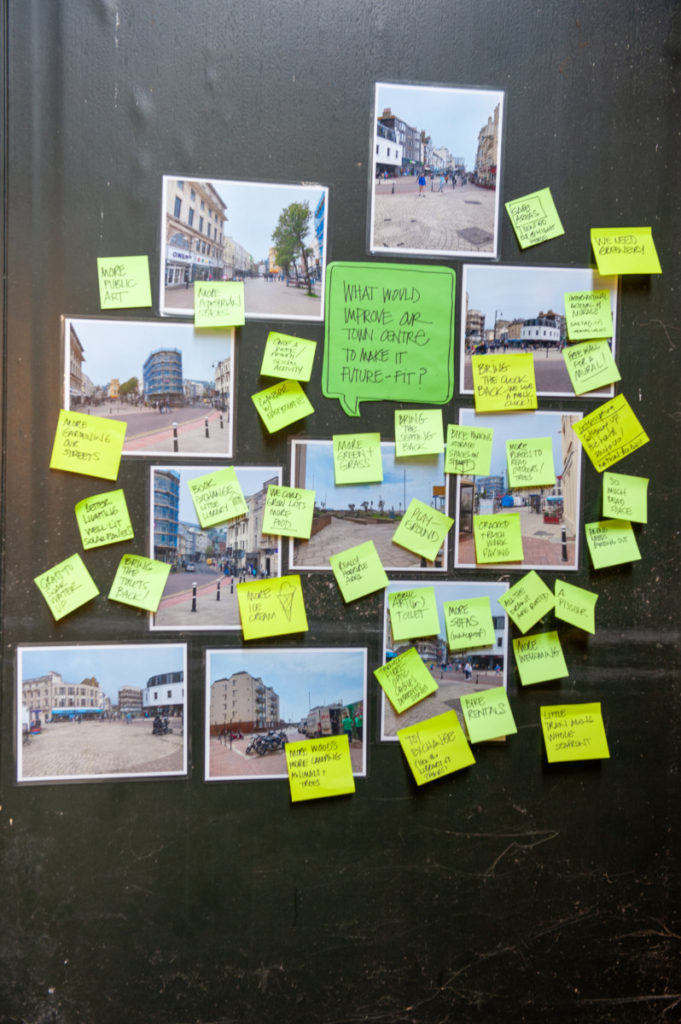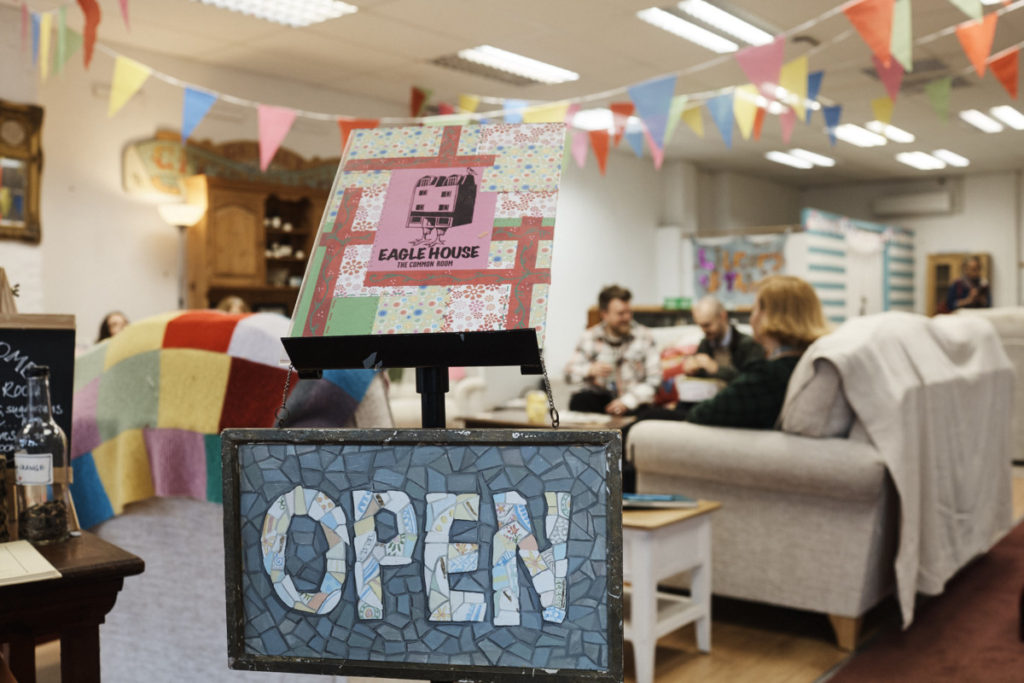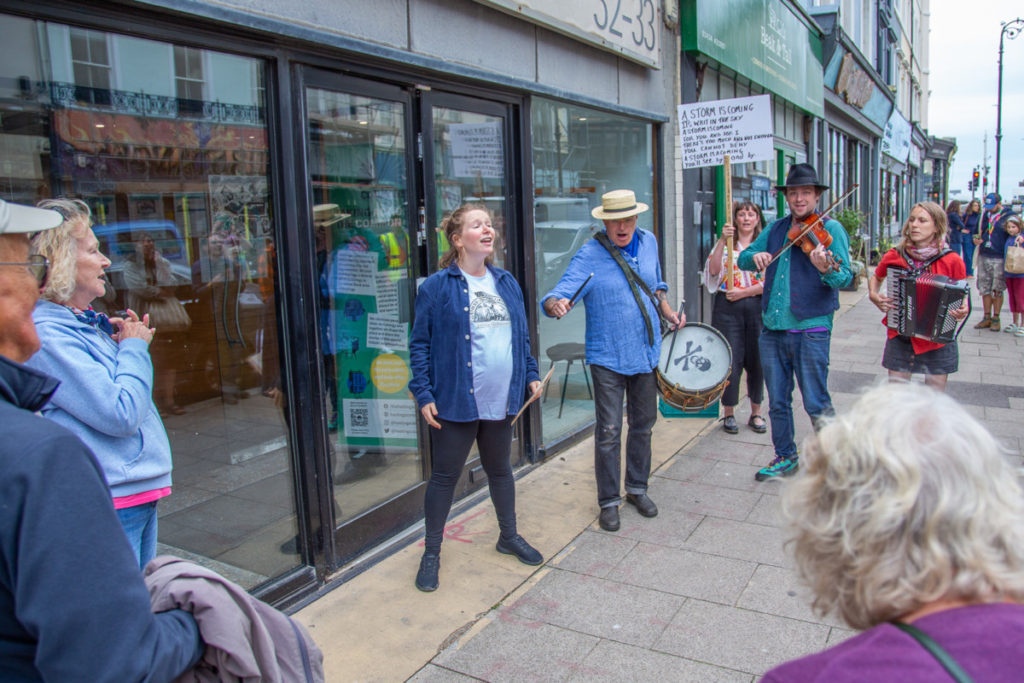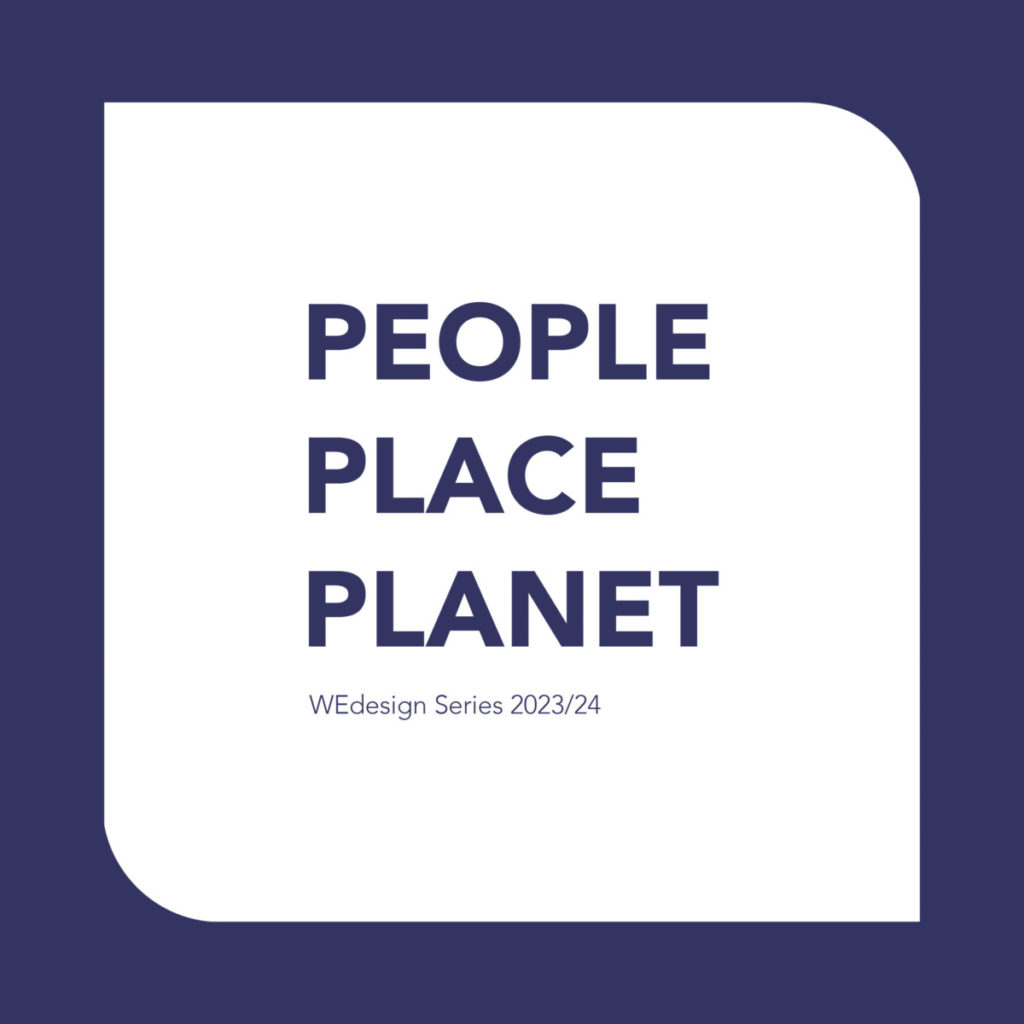Written by:
People, Place, Planet: Think Pieces, are a series of online blogs which will take our event series theme as a starting point and will offer an external voice and provocation.
In this edition of our People, Place, Planet: Think Pieces, Cam Smith explores the theme of People, Place, Planet through the work of Hastings Commons in the White Rock area of Hastings in East Sussex.
A new kind of transformation is unfolding in the heart of Hastings, challenging conventional notions of community-led design and placemaking. Hastings Commons is a pioneering approach to community-led DIY-style regeneration in the White Rock area of Hastings. Despite being among the 1% most ‘deprived’ areas in England, the neighbourhood, like many others across the country, is full of assets. We believe along with others – including, encouragingly, the new RIBA president Muyiwa Oki – in retrofitting rather than rebuilding from scratch; in working with existing assets rather than neglecting them or tearing them down. To work with these assets a developer has to know them; to know the neighbourhood. Since 2014, Hastings Commons has been developing organically from several connected and locally rooted organisations, united by one key purpose to regenerate this area while taking action against displacement through gentrification.

The Commons vision, based on 17 years of sustained community engagement, is much bigger than owning and managing buildings. It’s also about the people in the buildings, how they live, work and play together. It’s about the people of Hastings and what roles these buildings play in their lives and perceptions of the town. And of course, it’s about the mote of dust on which we all live and must continue to live by sharing ideas and resources.
Enabled by the Community Land Trust (CLT), Hastings Commons serves as a beacon marking a different approach to development, for the community, by the community. Through this very local work, Hastings Commons challenges traditional approaches, creating new models of ownership, management and collaboration that we hope can inspire people far beyond the here and now.

We take a holistic view, connecting the social, physical, ecological, cultural, economic, political, and human aspects of place. This is what makes our work so varied. Throughout, the aim has always been the same: to darn the fabric of the neighbourhood. Each of these aspects is essential for a tapestry of place free from tears and tatters. If one of these is lacking, it impacts the others. For example, if there is little social capital in a community and people are isolated from each other, it can be very difficult to achieve common political goals through collective action. Similarly, little can be done to improve the social capital of a neighbourhood if there are no spaces where different types of people, as well as people with common goals, can meet. That is why we start with buildings and spaces.

We rescue difficult and derelict buildings, squeezing them for maximum community benefit, both during and after renovation, and leaving them forever in the care of a CLT. To ensure this work remains a community-led process, we have recently reshaped the organisation to bring the CLT back to the forefront of the Hastings Commons ecosystem.

We’ve found that embracing a heritage lens is essential for effective placemaking. This perspective, often overlooked in discussions of innovative strategies, helps in identifying existing community assets to leverage for regeneration. It also delves into the neighbourhood’s stories and self-narratives, reminding individuals of the preciousness, uniqueness, and eccentricity of the place they call home. It may be surprising, but we see local heritage as having both global and forward-looking implications as well as local and historical. While the ‘Commons’ in Hastings Commons might stand for the assets that comprise our common heritage, we echo Wendell Berry’s wisdom that we don’t just inherit the world from our ancestors; we borrow it from our children. The CLT will enable us to leave our spaces to them in perpetuity.

Key to this ownership is preserving the integrity of a community during regeneration, avoiding the pitfalls of gentrification. Beyond maintaining affordable rents, this entails valuing the personal stories interwoven within the community fabric, fostering a deep understanding and love for the local area. Central to this approach is the involvement of local storytellers; individuals who possess an intimate knowledge of what makes a place special. By weaving these narratives into the regeneration process, we believe a reinforced respect blossoms within people. Not only for their physical environment but also for the people who call it home, whose home it was in the past, and whose home it will be in the future. This mindful interplay of heritage, stories, and community pride forms the foundation of a genuine and lasting connection between people and their surroundings. Cultivating this connection between people and place, and a more mindful way of thinking about our surroundings, could have implications for our precarious planet and all people living out their stories on its surface.
Home
About the Author
Cam Smith

Cameron Smith, Hastings Commons’ Impact & Feedback coordinator, combines his sociology background and interests in localism to pinpoint the community’s role in White Rock and Hastings. Through innovative models and active community engagement, he fosters organisational learning. Cameron embraces systems thinking and ‘commons’ concepts, viewing communities as intricate, interrelated systems requiring holistic nurturing. With an MSc in Global Migrations and Social Justice from the University of Glasgow, he rejects the divides between localism and globalism, and between humanism and environmentalism. He champions an environmental humanism, intertwining personal narratives with our surroundings to foster respect between humanity, space, and nature.
About the WEdesign 2023/24 Series: People, Place, Planet
People, Place, Planet is our theme for The Glass-House 2023/24 WEdesign series.
As we continue to shape our places, we are faced with the huge challenge of balancing our personal needs, the collective needs of our communities and those of our increasingly fragile planet.
This series will aim to identify and explore the opportunities and synergies that exist when we strive to balance people, place and planet in placemaking.
How can we think differently about how we shape our places? How can we collaborate more through design and placemaking to value and respect people, place and planet equally?
To find out more about the full 2023/24 series, visit our People, Place, Planet page on The Glass-House website.
WEdesign is The Glass-House’s annual series of free interactive public events, held online and in-person in cities across the UK, where we explore collaborative design in placemaking through discussion, debate and playful co-design activities.
To find out more about the WEdesign Programme, visit the WEdesign page on The Glass-House website.
WEdesign is supported by the Ove Arup Foundation.


